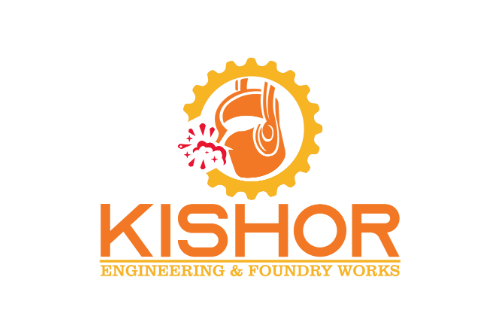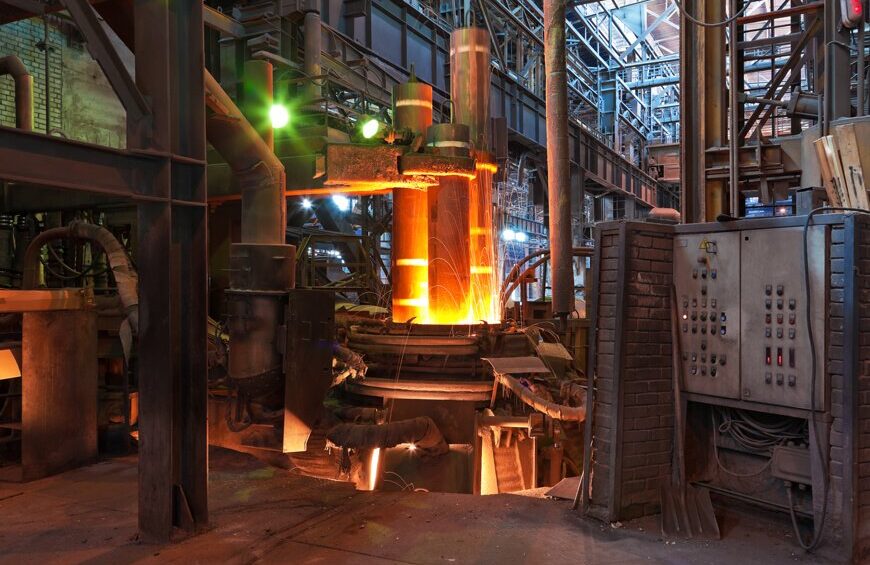Modern foundries are heavily mechanized. They contain all the machinery and equipment used in pattern and core making, casting, and molding. That assortment includes large melting furnaces, ladles, forklifts, cranes, conveyors, and transfer vessels. All foundry equipment is specially designed to function reliably in melt shop heat.
The fundamental distinction between foundries is ferrous (iron or steel) or non-ferrous (aluminum, brass, bronze, copper, etc.). The exact type of equipment is determined by the metals the foundry works with; electric arc furnaces are ideal for working with steel, while a foundry specializing in copper is more likely to use an induction furnace. Furnaces can range in size, from small tabletop equipment to ones that weigh several tons. Production quantities can range from a fraction of an ounce to several tons. The same variability in model and size extends to patternmaking and molding machines, and most other foundry equipment.
Foundry Design & Hazard Mitigation
A foundry is inherently hazardous. Its primary activity is melting metal, which frequently requires temperatures in excess of 2600 degrees Fahrenheit (1425 °C). To give that number some context, any water that comes into contact with an active furnace instantaneously expands to 1,600 times its original volume – charging a furnace with even slightly damp metal is enough to cause a catastrophic steam explosion.
The violent and unpredictable nature of chemical reactions at extreme high temperatures demand foundry safety procedures that are equally intense. Everything about a foundry is designed to minimize the risks associated with melting and transporting metal.
The same conditions that make for effective and safe melting – heat without moisture – also happen to be perfect conditions for an uncontrolled fire. Foundry design deals with this by removing flammable materials and keeping fire retardant handy at all times. Due to the aforementioned steam explosion issue, water can’t be used to put out foundry fires. Instead, fire-fighting efforts focus on smothering the flames with industrial extinguishers and dry sand.
Charging – loading metal into the furnace for melting – is one of the most dangerous operations in the foundry. A small mistake can cause anything from destruction of equipment to injury or fatality. Casters apprentice for years to develop the necessary understanding of the metals they are working with, their melting temperatures, and safe procedures.
Unsurprisingly, foundries have high ambient temperatures. They are hot, sweaty places to work – a fact aggravated by the fact that foundry workers are required to wear hard hats, eye protection, face shields, and thick aluminised clothing. As intense as the heat can be, workers wouldn’t be able to tolerate it at all if it weren’t for the high ceilings. Foundries are designed with a high roof to allow for air circulation.
After the metal has been melted, still needs to be moved around the foundry to be poured into molds. For obvious reasons, extreme precautions are taken to avoid spills, especially on or near foundry workers. The route is marked, as short as possible, and clear of obstructions. Traffic on the foundry floor is strictly controlled so unnecessary personnel are never in the way of molten metal during transport. Mechanical aids (forklifts, mechanical ladles) are used to further minimize human exposure.
Even with all the preventative measures, spills still happen. To minimize the damage when they do, foundry floors are constructed of non-reactive, flame-retardant materials. Compacted dirt is the most economical, and arguably the most effective. Regular concrete can crack with exposure the liquid metal, but high temperature concretes rated for thermal shock are available.
Safety conscious design and protective gear help mitigate the risk to workers and equipment, but the true key to safe foundry operations is skilled foundry workers with excellent situational awareness, strength, and endurance.




